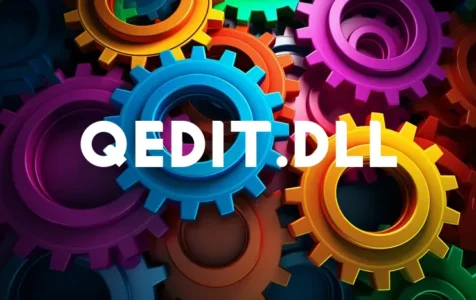Qedit.dll is a dynamic link library (DLL) file associated with the Windows operating system, specifically related to DirectShow Editing. It is a component developed by Microsoft Corporation and is integral for the functionality of programs that need video editing and streaming capabilities provided by DirectShow.
DirectShow is a multimedia framework and API produced by Microsoft for software developers to perform various operations with media files or streams. It is a part of the Microsoft DirectX library. Qedit.dll is vital for applications that create and edit multimedia content.
Is Qedit.dll Safe to Run?
Yes, qedit.dll is safe to run as it is a legitimate file from Microsoft. However, like any executable file, it can be mimicked or targeted by malware. It is important to ensure that the file is located in the correct directory (typically C:\Windows\System32) and that it is not a rogue file placed elsewhere by malicious software.
Could Qedit.dll Be a Virus or Malware?
In its legitimate form, qedit.dll is not a virus or malware. However, malware authors can create harmful programs and name them ‘qedit.dll’ to disguise their malicious intent. To ensure that qedit.dll is not a virus, run a scan with updated antivirus software and check the file’s location and digital signature.
Expert Tip: For smoother PC performance, consider using a PC optimization tool. It handles junk files, incorrect settings, and harmful apps. Make sure it's right for your system, and always check the EULA and Privacy Policy.
Special offer. About Outbyte, uninstall instructions, EULA, Privacy Policy.
Common Issues Associated with Qedit.dll
Some common issues users might encounter with qedit.dll include:
– The file is missing or not found.
– The file is corrupted by malicious software.
– An application requires the file but can’t locate it.
– The Windows registry has invalid entries for qedit.dll.
– The file causes error messages during the execution of certain programs.
How to Fix Issues with Qedit.dll?
Here are detailed instructions on how to address issues involving qedit.dll:
– Perform a malware scan: Use a reputable antivirus program to check for and remove any malware that might be using or masquerading as qedit.dll.
– Reinstall the affected application: If a specific application is causing errors related to qedit.dll, try uninstalling and reinstalling that application, which should restore the missing or corrupted file.
– Use System File Checker: Run the System File Checker (SFC) tool to repair missing or corrupted system files.
“`
sfc /scannow
“`
– Update Windows: Install the latest Windows updates, which can include patches or fixes for DLL issues.
– Install the DLL file: If qedit.dll is missing, you might consider downloading the file from a trusted source. However, this should be done with caution as downloading DLLs from the internet can pose a security risk. Ensure that the source is reputable before proceeding.
– Restore from the Recycle Bin: If the file was accidentally deleted, check the Recycle Bin and restore it if found there.
– Run a registry cleaner: Sometimes, problems arise due to invalid registry entries. A registry cleaner can resolve these by scanning and fixing invalid entries.
– Manually register the DLL file: Use the regsvr32 command to register the DLL file manually.
“`
regsvr32 qedit.dll
“`
– Use a system restore: If all else fails, perform a system restore to a point where your computer was functioning correctly.
User Experiences and Community Discussions
There are various community discussions and user experiences related to qedit.dll, particularly on technical forums and help communities such as the Microsoft Developer Network (MSDN) or other tech forums. It’s common for users to seek assistance with missing DLL files, registration of the file, or dealing with updates that have caused issues with the DLL.
Note: While there may be guidance to download and manually replace DLL files, this should be approached with caution and should not be the first troubleshooting step due to potential system security risks.
Please note that as an HTML document, there is no facility here to insert an link. However, you would typically benefit from visiting forums for these discussions, like:
– [Microsoft Windows Support Forum](https://support.microsoft.com/)
– [Google Groups on DirectX Video Programming](https://groups.google.com/forum/#!forum/microsoft.public.win32.programmer.directx.video)
Implementing the above solutions can typically resolve issues related to the qedit.dll file and ensure that your applications relying on DirectShow Editing run smoothly. If you’re uncomfortable performing any of these steps, consider seeking help from a professional IT technician.
